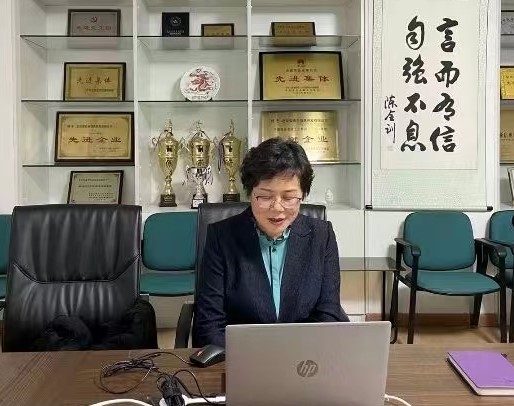The emergency of global warming is recognized at the global level and at the COP26 in November 2021, almost 200 countries approved the Glasgow Climate Pact. COP26 identified actions to advance implementation of the Paris Agreement and lead the world on a more sustainable, low-carbon pathway. One of the actions is to move away from fossil energy, which according to studies accounts for the majority of carbon footprint in products and services.
Why China’s nickel carbon footprint assessment will advance global carbon neutrality

Major economies across the globe are setting climate neutrality targets. But proper measurement and methodologies are needed to provide transparency and common benchmarks when assessing carbon footprint. At a recent event in China, there was general consensus on the importance of adopting a harmonized approach to carbon footprint calculation and disclosure.
Addressing climate change – a common goal shared by all
Major economies such as EU, China and US are currently working to find opportunities for collaboration. The EU and China have established the High-Level Environment and Climate Dialogue (HECD) mechanism. The US and China have also maintained regular climate change discussions and most recently released the Joint Glasgow Declaration on Enhancing Climate Action in the 2020s.
These three major economies reconfirmed their carbon neutrality targets – 2050 for EU and US, 2060 for China, identifying clean energy and green mobility as the key areas to cooperate.
Nickel plays an important role in the energy transition, with a critical role in the battery technologies which enable the electrification of road transport. The Nickel Institute is taking a leading role in assessing nickel carbon footprint, including in battery applications, which will support regulators across the world in their goal to decarbonize road transport.
As the cathode is identified as one of the key contributors to the carbon footprint of both batteries and EVs, it is important to correctly assess the nickel carbon footprint in battery use.
Dr. Veronique Steukers, December 2021.
Speaking at a nickel carbon footprint assessment webinar with Chinese stakeholders in December 2021, Dr. Veronique Steukers from the Nickel Institute quoted the World Resources Institute which has identified that road transport currently contributes 12% of global GHG emissions. “As the cathode is identified as one of the key contributors to the carbon footprint of both batteries and EVs, it is important to correctly assess the nickel carbon footprint in battery use,” she pointed out.

Carbon footprint disclosure – far-reaching regulatory requirement
The carbon neutrality targets pledged by individual countries are generally translated into regulatory requirements with immediate impacts on many different supply chains. Supply chains go beyond country borders, thus they carry regulatory requirements upstream and downstream to every corner of the world.
The speakers from the Nickel Institute, the Nickel Branch of China Non-ferrous Industry Association (CNIA-Nickel Branch), EASPRING (a leading Chinese battery material producer), and Antaike (a Chinese consulting firm specialized in battery materials) all agreed on the importance of the regulatory trend for battery carbon footprint disclosure, such as in the proposed EU Battery Regulation and China’s Green Supply Chain Management Standards.
Obviously, the first step for compliance is to get carbon footprint measured. At the webinar, the Nickel Institute’s Dr. Mark Mistry, introduced the progress that the Nickel Institute and its members have made with respect to the carbon footprint assessment of nickel products. This was illustrated by a world map indicating the lack of information on nickel carbon footprint assessment in China.
Life cycle 2017 project - participating companies and sites:

Professor Xu Aidong, Executive Secretary-General of CNIA Nickel Branch took up the challenge and said that the “CNIA should take on its role to make the map complete, starting from the carbon footprint assessment of nickel sulphate as a response to the urgent compliance need from the EV battery supply chain.” She also emphasized the importance of international cooperation with the Nickel Institute and other organizations.

Nickel carbon footprint assessment – aligned methodologies

For cross-border supply chains to function in a transparent and comparable way, it is essential that methodologies to calculate carbon emissions are aligned. There are currently several different standards and protocols available, with the ISO14040/44 emerging as the global reference.
Dr Mark Mistry welcomed the conversion of this ISO standard to a Chinese GB standard. The CNIA Nickel Branch agreed and will include methodology selection and alignment in their plan for next steps for nickel carbon footprint assessment.
The nickel carbon footprint is becoming increasingly relevant for the EV battery value chain, including nickel miners, auto makers, battery manufacturers and battery material producers.
Recognition of its importance is clear, with over 70 participants attending the webinar from across the sector.
As the practice of nickel carbon footprint assessment continues to develop, the next step is for an alignment of methodology for assessing the carbon footprint impact of battery recycling. According to the Nickel Institute’s Mark Mistry, “we need to make sure that the benefits of recycling are also taken into account when assessing nickel carbon footprint.”
Summing up the Nickel Institute’s approach to life cycle assessment of carbon footprint, Mark Mistry concluded that the carbon footprint of raw materials, including nickel, is relevant for various stakeholders, but notably the EV battery value chain. Of the different methods available, the ISO 14040/44 standard is the global reference which is advantageous to ensure comparability of data across different jurisdictions.
“The experience of the Nickel Institute shows that collecting data allows us to understand the impacts of the entire battery system, and conduct scenarios that identify potential for improvement. The Nickel Institute supports its member companies in collecting data in the format required for EV battery value chain,” he said.
China is a major player in the battery value chain, and adoption of harmonized methodologies to calculate its nickel carbon footprint will be a step forward in achieving the common goal of getting to carbon neutral.
-
Why do we conduct life cycle assessments and determine the GHG emissions from nickel? Different stakeholders require detailed, verified life cycle data or data on GHG emissions from nickel production (eg car manufacturers, stainless steel industry, trading platforms and regulators)
-
What is the challenge? Many existing labels provide information on carbon footprint but it is unclear what is counted and what is not taken into account
-
ISO 14040/44: the global reference for Life Cycle Assessment The compliance of the Nickel Institute’s collection process with ISO 14044 standard ensures reliability and robustness of our data
-
Life cycle 2017 project product coverage – Nickel metal, Ferronickel, Nickel sulphate: Data coverage for all products sufficient to consider aggregated data being representative on a global scale
-
Life Cycle Assessments allow us to understand in depth where main impacts occur throughout the production process: Provides Guidance on where most potential for improvement lies
-
Comparison of different life cycle data help us to understand potential for improvement & trends: Range of GHG emissions of different nickel products ranges from 4kg CO2 eq/kg Ni to >>100 kg CO2eq/kg Ni

